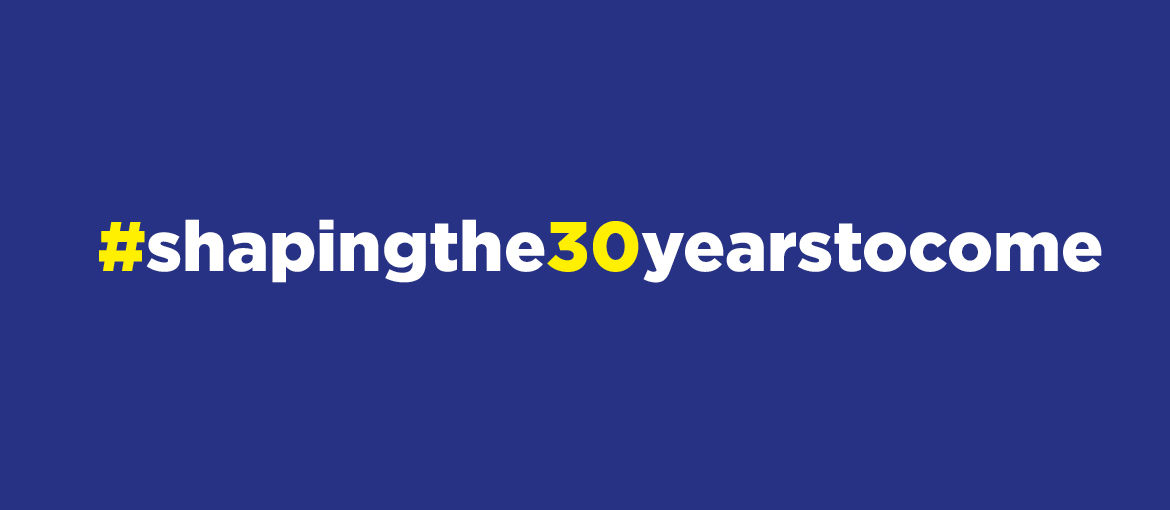Table of Contents
It’s called the Newtrain Manifesto. Written at the end of 2019 by a group of students from Scuola Holden, a private storytelling school in Turin, it’s a document that puts forward 30 theses openly inspired by the famous Cluetrain Manifesto. But before we discuss its merits, we should first turn back the clock to 1999. That’s the year Rick Levine, Christopher Locke, Doc Searls and David Weinberger published the 95 theses of the Cluetrain Manifesto, aimed at disrupting the marketing world, which, at the time, still seemed to underestimate the impact of the Internet on markets and the relationships between people and businesses.
The Cluetrain Manifesto: how relevant is it today?
The Cluetrain Manifesto’s fundamental thesis was that the Internet could not just be viewed as just another new mass medium – on a par with TV, radio and print – because it has a revolutionary component: the possibility of horizontal conversations between people. The Internet would be an environment for dialogue not monologue, where companies would no longer be in complete control of the message. According to this vision, corporate communication would be less about sending down messages to the masses from on high and more about engaging in horizontal, continuous and open dialogues with people, now freer than ever to respond, find information, create things and organise themselves into critical masses than they were in the pre-digital age. This is summarised perfectly in the very first thesis.

Markets are conversations.
These are the most important words in the manifesto and probably the most prescient. Because in today’s digital era, people really can rewrite the rules of the game by creating content, tapping into other people’s interests and having a conversation with them. In other words, everyone can have a conversation with everyone else, while often new consumer-creators are able to attract just as much of the public’s attention as companies: their content, on digital channels, gets millions of views because it is seen as freer, more authentic, transparent and without ulterior motive. Companies have had to learn how to get down off their pedestal and stop sending messages down from above. The new rules are: listen to people, meet their actual needs, start conversations and try to manage relationships with them as openly as possible. So, did everything turn out as predicted by the Cluetrain Manifesto? Did the Internet make people less passive and force major brands to re-assess and adjust their aims and objectives, leading to greater transparency and more engagement with the public? To tell the truth, the answer seems to be no.
Something’s not quite right
The fundamental thesis of the Cluetrain Manifesto proved to be a shrewd reading of reality. The Internet gave people the power to share information horizontally, form critical masses, respond to corporate content as equals, and sometimes even get more feedback from the public than big brands. Yet, in other respects, the web seems to be a far cry from the place pictured in the authors’ 95 theses. Rather than a free and democratic environment where people find and share information with others, it often appears to be place where people always act out of self-interest, where information is not actually free or without an agenda, but instead responds to obvious market needs. It’s in this context that we should understand the rise of phenomena like fake news, clickbait and spam: frantic attempts to grab people’s attention and start thousands of conversations because conversations have become the new market. So, then: is the Internet today a land of freedom or a toxic, murky environment? Hard to say. But the emergence of these trends cannot be ignored:
Transparent in form, opaque in content
Companies have quickly learned how to imitate the public’s language. But often the direct, informal and colloquial tone of voice, free from the pomposity that typified advertising in the last century, is just a trojan horse for evading the public’s defences and continuing to pursue the same objectives as always: to get people talking about them, create needs and sell people unnecessary products and services.
The public’s loss of innocence
Today, the public is much more diverse than the angelic vision painted by the Cluetrain Manifesto. The innocent time when people uploaded tutorials to YouTube with the genuine intention of helping others seems to belong to the stone age. Just as companies have learnt how to imitate the language of ordinary people, ordinary people have learnt how to use the same strategies that companies use: producing content not for its own sake, but as a tool for generating hundreds and thousands of conversations that can be monetised (by hosting ads on a platform or collaborating directly with brands as influencers or content creators). While, on the one hand, people express outrage at this or that corporate practice, on the other, they often use the very same mechanisms: using content as a monetisation tool. If I have 100,000 followers on Instagram, I can charge a company significant sums to collaborate with me in creating content. Today, even the most inexperienced user knows that the more people are talking with them, the more money they can make. In theory, there’s no harm in this. But in practice, this mechanism often results in creators desperately trying to create content that is likely to be shared and start conversations on line, favouring viral load over quality.

Influencer marketing
It’s not hard to see the influencer marketing phenomenon as the direct result of the first two points. Influencers owe their success to their ability to speak to other people horizontally. The more they are able to do this, the more conversations they generate. That’s why brands work with them. After all, as the saying goes: if you can’t beat them, join them. In other words: if, as a company, you’re seen as distant and opaque, and you’re unable to have horizontal conversations with your target audience, join forces with those who can. Influencers and content creators, on the other hand, are keen to work with brands because it allows them to monetise their content directly. That clear line drawn by the Cluetrain Manifesto, which put bad, untransparent brands on one side and the innocent masses on the other, was crossed a long time ago.
The blurring of the line between editorial content and advertising
In a market where the quantity and quality of conversations have become valuable assets, companies are increasingly producing content that looks less like advertising and more like information or entertainment. The reason is simple: this content works better than any other at engaging people and generating conversations. But is this really good for the user? While it used to be easy to tell the difference between advertising and news, because it was confined to a commercial break or a clearly distinguishable part of a magazine, it’s no longer so simple. Indeed, today firms often collaborate with magazines and online outlets. The result? Information whose origins are often unclear, where the line between the desire to inform and the desire to sell no longer seems to be obvious. Paradoxically, instead of freeing information, the Internet seems to have made it murkier and more easily confused with advertising.
Greenwashing
It’s the paradox of paradoxes: ethical behaviour has become a commodity. Getting involved in good causes and publicising their social responsibility have become ways for companies to create a favourable impression with the public. But these actions often seem to be pursued for marketing reasons, rather out of genuine conviction. It appears that pretending to be green pays more than it does to actually go green. This is the phenomenon known as greenwashing, in other words, portraying yourself as environmentally friendly in public, without really changing fundamentally, just to earn people’s approval.
The Newtrain Manifesto. Has the train arrived too late?
It’s in this climate of disillusionment with brands’ broken promises that the 30 theses of the Newtrain Manifesto arrive: it’s a generational manifesto (when it was published, its authors were all between the ages of 19 and 29) that demands more profound change from companies. It’s no coincidence that there are 30 theses, the same number of years between now and 2050, said to be the point of no return before ecosystems collapse.
But what’s in the Newtrain Manifesto? What does the next generation of communicators want from brands and businesses? Does it present a new vision of reality? We’ll try and answer each of these questions below.
The content of the Newtrain Manifesto
From the 30 theses of the manifesto emerges the need for transparency, truthfulness and meaningfulness. Environmental sustainability can no longer be just an advertising boast, we read in thesis one. Subsequent theses address issues such as equal rights, the treatment of workers and awareness of manufacturing impacts. There is also clear unease about the murky use of big data and the exploitation of social struggles. More ethics, more transparency, more generosity. All the themes you’d expect to find in a programme for change penned by a generation who, in thesis 20, explicitly say: We are not angry, we are disappointed.

The document’s limitations
What we find in these 30 theses is significant because it is the direct expression of a generation that is openly disappointed with the ways that businesses interact with the public. But perhaps it’s what’s missing from the manifesto that makes it an iconic document for this generation. While the 95 theses of 1999’s Cluetrain document painted a picture of reality that nobody was able see until then, as well as a feasible outline of the future market, the Newtrain Manifesto provides nothing in the way of new interpretations of the present or near future. More than an outlook, it is an expression of unease. It’s an important point because it confirms that younger generations don’t, in fact, feel liberated by the Internet. Rather, they are aware of the reality in which we find ourselves and disappointed by the market that has once again managed to use a technological revolution to its advantage. There won’t be a future, the next generation is shouting at companies, unless you really change.
There’s no future without responsibility
The next generation don’t talk about the future because they can’t see one. They say that they are disappointed, that they want more ethics, transparency, generosity, beauty, meaning. They’re right. But perhaps the Newtrain Manifesto should come with a warning: it seems to have been written from the same point of view as the Cluetrain Manifesto, which was published at the dawn of the Internet age.
Although they were imagining much of what would happen, the authors were still living at a time when the boundaries between companies and people were rock solid. But these boundaries, just like the Walls of Jericho, have long since fallen, as we’ve already seen. Companies have learnt to imitate people to survive. But it’s also true that people have learnt to imitate strategies used by companies and to turn a profit from their ability to build public approval.
In this context, does it still make sense to demand that businesses change, telling them what they should or shouldn’t do? Does it still make sense to think of ourselves as so small, simple and powerless that we have to ask those who we see as bigger, smarter and stronger to behave better?
Perhaps, if we really do risk planetary collapse, we could try thinking of ourselves more as agents of change and less as disappointed bystanders. If the world doesn’t make sense, then it isn’t just the fault of brands, it’s ours too. Brands aren’t ethical, but neither are we. Brands tend to favour content that gets people talking and drives monetisation. But so do we.
If we are asking brands to create beauty, we should first learn how to create it ourselves. After all, if companies are so preoccupied with what we think, it means that they are probably terrified of the power that we have but are not yet fully aware of.
Rather than businesses, maybe the next manifesto should be addressed at ourselves as people, employees, communicators and human beings who are responsible and able to accept change is needed, above all inside ourselves. More ethics, more transparency, more generosity, more beauty: let’s start insisting on them from ourselves, too. If time is running out for companies, it’s also running out for us.

